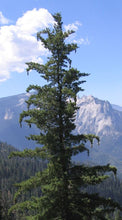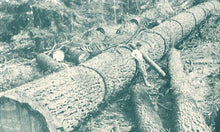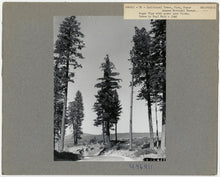Sugar Pine (Blister Rust Resistant)
Regular price
$5.00
Sale
Pinus lambertiana
Origin: Stanislaus National Forest, California
Improvement status: Wild (single plant selection)
Seeds per packet: ~10
BOTANICAL SAMPLE - NOT GERMINATION TESTED
Life cycle: Perennial
Sugar pines are the biggest pine species and they have the longest cones of the genus. Until recently, they were the tallest pine species, but a combination of disease, habitat destruction, and wildfires have decimated the population (and now the tallest individual pine trees in the world are a few ponderosa pines). The fungal disease White Pine Blister Rust, in particular, has caused serious die-offs of this species across swaths of its native range (mainly California and Oregon, with a handful of trees in Nevada and Baja California, Mexico). We are incredibly excited to be able to offer these seeds from a single special tree in Stanislaus National Forest ("Tree #19320") that has been found to produce offspring that are resistant to the dreaded blister rust.
These seeds came to us thanks to the great Sugar Pine Foundation, based in South Lake Tahoe, California, which has been working with the U.S. Forest Service to identify blister rust resistant trees and replant them across its range. Their methodology is simple but effective: they grow out a few hundred seedlings from trees in the wild that are presumed to be at least somewhat resistant to the fungus (by surviving better or longer than other trees in an area impacted by the blister rust), and then inoculate the seedlings with the fungus. If more than 50% of the seedlings of a particular tree are alive and healthy after two years, that tree becomes a parent tree for their program.
Maria Mircheva, executive director of the Sugar Pine Foundation, wrote this to me when I asked for any more information about the particular tree: "Tree 19320 is a sugar pine in the Stanislaus National Forest at elevation 4500ft. It has about 1615 seeds per pound and a 50% germination rate. This is just interpreting the nursery data. Over 50% of its seedlings came out as white pine blister rust resistant. I don't personally know this tree but it is near Big Trees State Park so I am guessing it is huge."
Sugar pines are considered a type of white pine, but unlike their cousins who actually bear that name, sugar pine's cones are full of delicious sweet edible pine nuts (I have to admit we all tasted a few when they arrived at the EFN seedhouse in Minnesota — and they were phenomenal). But the sweet nuts didn't give this plant its common name: rather it's the sweet resin that bleeds from any wound on the tree. This sweet sap was prized by indigenous people, though it's advised to eat only small amounts (or suffer a laxative effect). Some sources indicate that boiling the sap may neutralize the ill effects of the raw sap.
While this species is native in the west — and it's our hope that individuals will use these seeds to help restore this plant to its former prominence on the landscape — it is hardy to at least Zone 7 and will likely thrive in other parts of the country as well. It may take a couple decades before you get a significant amount of nuts, but when you finally do we can promise it'll be worth the wait!








